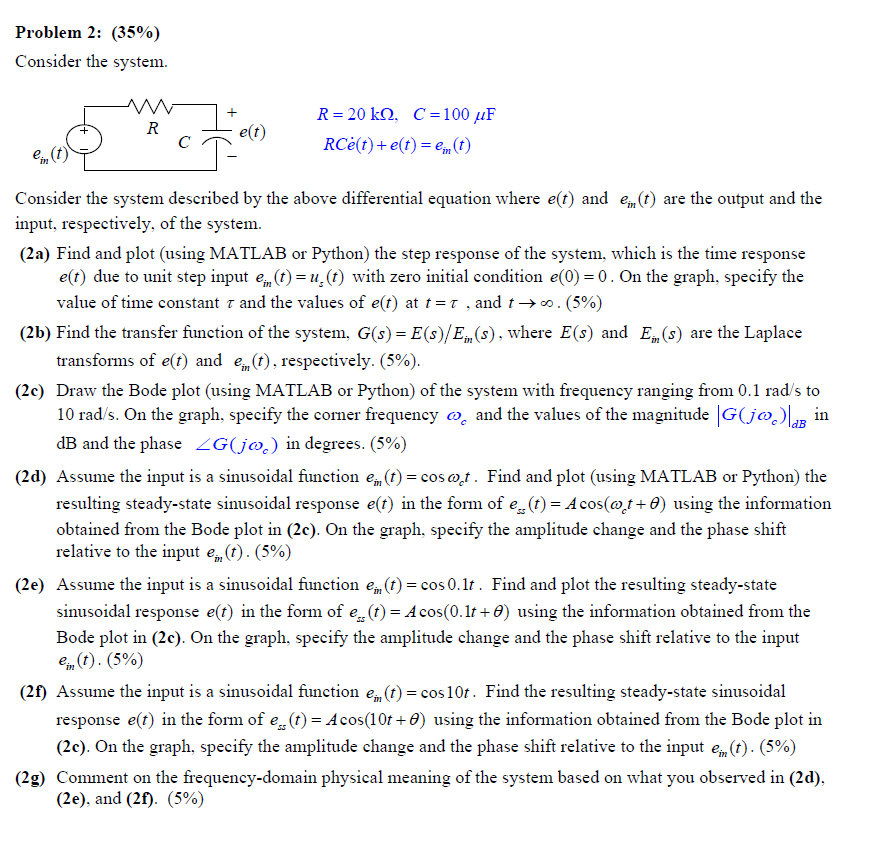Answered step by step
Verified Expert Solution
Question
1 Approved Answer
Problem 2: (35%) Consider the system. ein ww R 20 kn, C = 100 F R e(t) C RCe(t)+e(t)=(t) Consider the system described by

Problem 2: (35%) Consider the system. ein ww R 20 kn, C = 100 F R e(t) C RCe(t)+e(t)=(t) Consider the system described by the above differential equation where e(t) and e(t) are the output and the input, respectively, of the system. (2a) Find and plot (using MATLAB or Python) the step response of the system, which is the time response e(t) due to unit step input e(t) = u(t) with zero initial condition e(0) = 0. On the graph, specify the value of time constant 7 and the values of e(t) at t=7, and t. (5%) (2b) Find the transfer function of the system, G(s) = E(s)/Em(s), where E(s) and E,,(s) are the Laplace transforms of e(t) and e(t), respectively. (5%). (2c) Draw the Bode plot (using MATLAB or Python) of the system with frequency ranging from 0.1 rad/s to 10 rad/s. On the graph, specify the corner frequency @ and the values of the magnitude |G(jw)| in dB and the phase G(jo) in degrees. (5%) (2d) Assume the input is a sinusoidal function e(t) = cos @t. Find and plot (using MATLAB or Python) the resulting steady-state sinusoidal response e(t) in the form of e(t) = A cos(@t+) using the information obtained from the Bode plot in (2c). On the graph, specify the amplitude change and the phase shift relative to the input e(t). (5%) (2e) Assume the input is a sinusoidal function e,, (t) = cos 0.1t. Find and plot the resulting steady-state sinusoidal response e(t) in the form of e(t) = A cos(0.1t+) using the information obtained from the Bode plot in (2c). On the graph, specify the amplitude change and the phase shift relative to the input ein(t). (5%) (2f) Assume the input is a sinusoidal function e(t) = cos 10t. Find the resulting steady-state sinusoidal response e(t) in the form of e(t) = Acos(10t+0) using the information obtained from the Bode plot in (2c). On the graph, specify the amplitude change and the phase shift relative to the input en (t). (5%) (2g) Comment on the frequency-domain physical meaning of the system based on what you observed in (2d), (2e), and (2f). (5%)
Step by Step Solution
There are 3 Steps involved in it
Step: 1

Get Instant Access to Expert-Tailored Solutions
See step-by-step solutions with expert insights and AI powered tools for academic success
Step: 2

Step: 3

Ace Your Homework with AI
Get the answers you need in no time with our AI-driven, step-by-step assistance
Get Started


